Introduction to McDonald’s
Welcome to the world of McDonald’s, a global icon that has shaped the fast-food industry and captured the hearts of millions worldwide. Founded in 1940 by Richard and Maurice McDonald in San Bernardino, California, the company has grown from a humble drive-in restaurant to an international phenomenon, synonymous with quick, tasty, and convenient dining experiences.
It is best known for its iconic golden arches, timeless classics like the Big Mac and the McChicken, and friendly mascot, Ronald McDonald. But there’s so much more to this fast-food giant than meets the eye. Let’s dive deeper into the fascinating history, culture, and impact of McDonald’s.
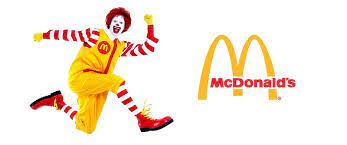
A Flavorful Journey: A History of McDonald’s
The story of McDonald’s began with the McDonald brothers’ simple idea of offering a limited menu with quality, consistency, and speed. Their innovative “Speedee Service System” laid the foundation for fast-food chains as we know them today. In 1955, entrepreneur Ray Kroc joined forces with the McDonald brothers and launched the first official McDonald’s franchise in Des Plaines, Illinois.
From there, the company has expanded rapidly, embracing new technologies and marketing strategies. The company’s emphasis on standardization and efficiency helped it become a symbol of American culture and a pioneer in the fast-food industry.
McDonald’s Around the World
As McDonald’s continued to grow, it transcended borders and became a global phenomenon. Today, you can find McDonald’s restaurants in over 100 countries, serving diverse menus tailored to local tastes while preserving the brand’s signature items. From the McSpicy Paneer Burger in India to the Ebi Filet-O in Japan, its menu adapts to the culinary preferences of each region it serves.
Beyond the Menu: McDonald’s Impact
Beyond the delicious food, it has made significant contributions to the communities it serves. The company has been actively involved in numerous social initiatives, supporting education, health, and environmental causes. The company has provided comfort and support to families of seriously ill children worldwide through Ronald McDonald House Charities.
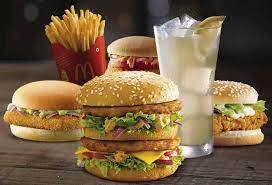
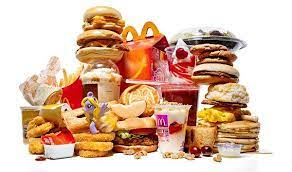
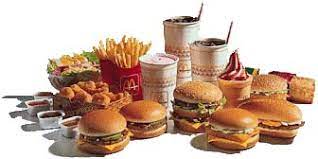
Innovation and Adaptation
To remain relevant in a constantly evolving market, the brand has embraced innovation and adapted to changing consumer preferences. From introducing healthier menu options to integrating digital technology for ordering and payment, the company continuously seeks to enhance customer experiences and streamline operations.
The Future of McDonald’s
As we venture into the future, the company remains committed to delighting customers and positively impacting society. Through sustainability efforts, community engagement, and culinary innovation, it is poised to continue its journey as a beloved global brand.
Join us as we explore the fascinating world of McDonald’s, from its history and cultural impact to the exciting innovations that lie ahead. Whether you’re a loyal fan or a curious newcomer, get ready to indulge in the story of McDonald’s – a journey that celebrates the joy of sharing good food, happy memories, and a sense of togetherness.
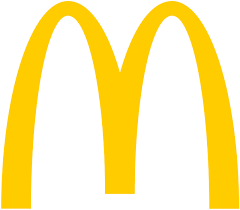
McDonald’s Marketing Campaigns
It has earned a reputation for its iconic and unforgettable marketing campaigns that resonate with audiences across the globe. Let’s take a look at some of the most remarkable McDonald’s marketing campaigns to date:
1. “I’m Lovin’ It” (2003)
Launched in 2003, the “I’m Lovin’ It” campaign stands as one of the most iconic and enduring marketing endeavors. Developed by the German marketing agency Heye & Partner, the campaign’s primary objective was to forge a deep emotional bond with customers, reinforcing McDonald’s image as a place of joy, happiness, and delight.
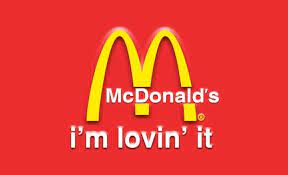

At its core, the campaign featured a captivating jingle of the same name, “I’m Lovin’ It,” composed by Pharrell Williams and sung by Justin Timberlake. This catchy and infectious tune transcended cultural and linguistic boundaries, becoming synonymous with company’s brand identity.
A key aspect of the campaign was highlighting genuine, real-life moments of individuals from diverse backgrounds relishing McDonald’s food, exuding happiness and satisfaction. Through television commercials, radio spots, print advertisements, and digital promotions, It has consistently spread the “I’m Lovin’ It” message across multiple platforms.
The simplicity and relatability of the slogan enabled seamless adaptation for different markets and languages worldwide, allowing the company to maintain a consistent global presence while tailoring the message to suit local tastes and preferences.
“I’m Lovin’ It” not only struck a chord with existing customers but also appealed to a younger audience, thanks to its savvy inclusion of popular musicians like Justin Timberlake, further connecting with the youth demographic.
Over time, the “I’m Lovin’ It” campaign has firmly embedded itself in McDonald’s branding, proving its enduring efficacy. Continuously employed in various advertising formats, the campaign has become a symbol of joy and contentment deeply ingrained in popular culture.
By evoking feelings of happiness, satisfaction, and unity, the “I’m Lovin’ It” campaign has successfully established a positive and emotional link between the company and its customers, solidifying the brand’s position as a globally recognized fast-food icon.
2. “The Big Mac Chant” (1974)
The “Big Mac Chant” campaign, launched in 1974, was a highly successful marketing effort by McDonald’s that turned the Big Mac into an unforgettable cultural phenomenon. The campaign focused on a simple and catchy jingle that highlighted the ingredients of the Big Mac in a rhythmic chant, creating a memorable and engaging experience for customers.


The jingle featured the following lyrics: “Two all-beef patties, special sauce, lettuce, cheese, pickles, onions on a sesame seed bun.” The repetition of these ingredients in a musical and rhythmic manner helped etch the Big Mac’s recipe into the minds of consumers, making it one of the most recognizable burgers in the world.
The campaign utilized various advertising mediums, including television commercials, radio spots, print ads, and in-store displays, to ensure widespread exposure and reinforce the Big Mac’s status as McDonald’s flagship burger.
The simplicity and memorability of the chant made it a cultural sensation, with people of all ages and backgrounds enthusiastically reciting the jingle. It became a popular catchphrase and was even referenced in popular TV shows, movies, and other media, further embedding the Big Mac into the fabric of pop culture.
“The Big Mac Chant” campaign not only increased the sales of Big Macs but also solidified the company’s position as a dominant force in the fast-food industry. The campaign’s success contributed significantly to the burger’s enduring popularity, making it a timeless classic that continues to be a favorite among McDonald’s customers worldwide.
Decades after its initial launch, the “Big Mac Chant” remains a testament to the power of a simple and effective marketing message, as it has stood the test of time and continues to be celebrated as one of the most memorable and successful campaigns.
3. “Hamburglar” (1971-2002)
From 1971 to 2002, the “Hamburglar” campaign stood as one of the most cherished and enduring marketing ventures. This initiative showcased the mischievous yet endearing character known as the “Hamburglar,” who became an iconic figure synonymous with McDonald’s.

Sporting a distinctive appearance, the Hamburglar was a pint-sized, cartoonish character donning a black-and-white striped shirt, a wide-brimmed hat, and a mask. His sole mission was to playfully pilfer hamburgers from other characters in McDonaldland, a fictional realm inhabited by various McDonald’s mascots.
The Hamburglar’s playful antics took center stage in animated television commercials, print advertisements, and in-store displays. In these commercials, viewers witnessed the Hamburglar’s spirited attempts to sneak away with hamburgers, only to be thwarted by other beloved McDonaldland characters, such as Ronald McDonald, Grimace, and Officer Big Mac.
With his mischievous and charming demeanor, the Hamburglar resonated particularly well with children, contributing to the creation of a delightful and captivating McDonaldland world within the brand’s advertising.
Over the years, the Hamburglar’s appearance and personality underwent some changes, but he remained an integral part of the marketing endeavors. The campaign’s remarkable longevity and wide-reaching appeal firmly established the character as an iconic element of the company’s branding and pop culture.
As the early 2000s approached, the Hamburglar gradually faded from the company’s advertising landscape as the company redirected its marketing efforts. However, the character’s legacy endures in the hearts of fans who fondly recall his entertaining escapades in pursuit of hamburgers.
The Hamburglar campaign serves as a testament to its remarkable ability to create engaging and relatable characters that capture the imaginations of audiences, further solidifying the fast-food chain’s status as a cultural icon and a place of joyful family moments for children and families worldwide.
4. “McDonald’s Monopoly” (1987-Present)
The “McDonald’s Monopoly” campaign, launched in 1987 and continuing to the present day, is one of the most popular and anticipated marketing promotions. This annual campaign combines the excitement of the classic Monopoly board game with the allure of winning fantastic prizes from McDonald’s.
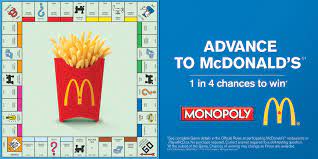
During the promotion, McDonald’s distributes special Monopoly-themed game pieces on select menu items, including drinks, fries, and sandwiches. Each game piece contains stickers representing properties from the Monopoly board, such as Park Place or Boardwalk, as well as Instant Win or Collect and Win prizes.
Customers are encouraged to collect property sets to win valuable prizes, ranging from small items like free food items to more significant rewards like vacations, electronics, or cash prizes. Some of the most coveted prizes include luxury cars and substantial cash sums, making the campaign highly enticing to customers.
The excitement surrounding the McDonald’s Monopoly campaign is not limited to customers, as the promotion creates a sense of community and competition. People often form groups to trade game pieces and collaborate to increase their chances of winning coveted prizes.
The McDonald’s Monopoly campaign has become a tradition for many customers, who eagerly anticipate its return each year. Its ability to blend the nostalgic appeal of the Monopoly game with the allure of winning real-world prizes has made it a resounding success for McDonald’s, attracting a broad and engaged audience.
The campaign’s longevity and enduring popularity have cemented McDonald’s Monopoly as one of the most beloved and anticipated marketing promotions in the fast-food industry. It continues to be a fun and exciting way for customers to interact with the McDonald’s brand and create lasting memories with friends and family.
5. “Happy Meal Toys” (1979-Present)
The “Happy Meal Toys” campaign, launched in 1979 and still running strong, is one of McDonald’s most successful and iconic marketing initiatives. The campaign revolves around the inclusion of fun and collectible toys in McDonald’s Happy Meals, making them a favorite among children and a nostalgic treat for adults.
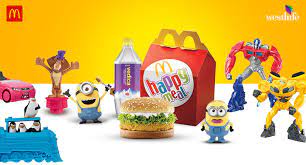

With the goal of creating a memorable and enjoyable dining experience for kids, McDonald’s introduced the Happy Meal concept in the late 1970s. Each Happy Meal comes with a small, age-appropriate toy, ranging from action figures and dolls to puzzles, mini-games, and themed merchandise tied to popular movies or animated series.
The variety and appeal of the toys have made Happy Meals a must-have for children visiting McDonald’s restaurants worldwide. The toys change regularly, typically every few weeks, featuring different characters and themes to keep the offerings fresh and exciting.
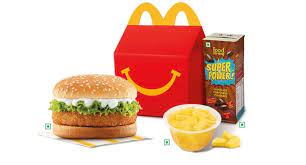
The Happy Meal Toys campaign has effectively tapped into pop culture trends and media franchises, collaborating with major entertainment companies like Disney, Pixar, Marvel, and more. By featuring characters from beloved movies, TV shows, and games, the campaign ensures the toys are relevant and sought after by both children and collectors alike.
Beyond offering entertainment, the Happy Meal Toys campaign has become an essential part of McDonald’s branding and a reflection of the brand’s commitment to family-friendly experiences. The toys often align with educational themes, promoting creativity, problem-solving, and imagination in children.
Over the years, Happy Meal Toys have not only delighted countless kids but also gained a devoted adult following, with many enthusiasts actively collecting the toys and reliving their childhood memories.
The Happy Meal Toys campaign continues to be a powerful draw for families visiting McDonald’s, adding an element of surprise and joy to the dining experience. It remains a testament to McDonald’s ability to create engaging marketing initiatives that resonate with customers of all ages and ensure the brand remains a cherished part of family traditions for generations to come.
6. “McCafe” (2009)
The “McCafe” campaign, launched in 2009, marked a significant milestone for McDonald’s as it ventured into the specialty coffee market. The campaign aimed to position McDonald’s as a serious player in the coffee industry, offering a range of high-quality coffee beverages and baked goods under the “McCafe” brand.
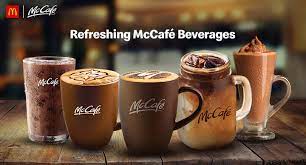
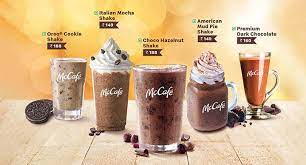
Prior to the campaign, McDonald’s primarily focused on its fast-food offerings, with coffee being a simple and convenient addition to the menu. However, as consumer tastes evolved and demand for premium coffee options grew, McDonald’s recognized the opportunity to expand its beverage offerings.
The “McCafe” campaign emphasized the quality and variety of coffee beverages available at McDonald’s, including lattes, cappuccinos, mochas, and iced coffees. McDonald’s also introduced an array of pastries and desserts to complement the coffee lineup, further enhancing the cafe-like experience.
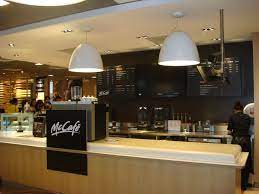
The campaign was characterized by a modern and inviting ambiance in McDonald’s restaurants, featuring comfortable seating, contemporary decor, and a separate coffee preparation area known as the “McCafe Corner.”
To support the “McCafe” campaign, McDonald’s launched a series of TV commercials, print ads, and digital promotions. These advertisements showcased baristas preparing freshly brewed coffee and promoted the idea that McDonald’s could deliver the same level of quality and taste as specialty coffee shops but at a more affordable price.
The “McCafe” campaign successfully attracted coffee enthusiasts who were looking for premium coffee options in a convenient and familiar setting. It also served as a competitive move against coffee shop chains by offering a more budget-friendly alternative.
Since its launch, the “McCafe” campaign has become a pivotal part of McDonald’s brand identity, significantly expanding the company’s beverage business and driving increased foot traffic to its restaurants.
The success of the “McCafe” campaign demonstrated McDonald’s ability to adapt to changing consumer preferences and expand its offerings to meet the demands of a diverse customer base. It solidified McDonald’s position not only as a leading fast-food chain but also as a contender in the competitive specialty coffee market.
7. “The McRib Is Back” (1982-Present)
The “The McRib Is Back” campaign, first launched in 1982 and continuing to the present day, is one of McDonald’s most anticipated and iconic limited-time offerings. This campaign centers around the re-release of the McRib sandwich, a seasoned boneless pork patty, shaped to resemble a rack of ribs, served with pickles, onions, and barbecue sauce on a hoagie-style bun.
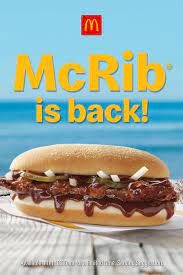
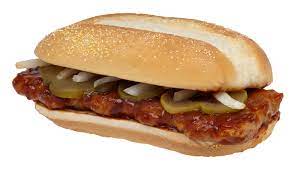
The McRib sandwich has become a cult favorite among McDonald’s enthusiasts, known for its unique taste and distinct appearance. However, instead of being a permanent menu item, the McRib is periodically brought back for a limited time, typically generating a surge in customer interest and excitement.
The “The McRib Is Back” campaign taps into the nostalgia and anticipation surrounding the sandwich’s return. McDonald’s leverages various marketing channels, including television commercials, digital advertisements, social media, and in-store promotions, to announce McRib’s comeback and drive customer engagement.
The limited-time nature of the campaign creates a sense of urgency, encouraging customers to visit McDonald’s restaurants during the promotional period to satisfy their McRib cravings. Fans often eagerly await the sandwich’s return, and some even travel considerable distances to indulge in the McRib while it is available.
The “The McRib Is Back” campaign has proven to be a highly successful marketing strategy for McDonald’s, contributing to increased foot traffic and sales during the promotional period. Moreover, the campaign fosters a sense of community and excitement among McDonald’s enthusiasts, who share their love for McRib on social media and other platforms.
The ongoing success of “The McRib Is Back” campaign showcases McDonald’s ability to create a buzz-worthy limited-time offering and demonstrates the power of leveraging nostalgia and exclusivity to drive customer engagement and boost brand loyalty. As long as the appetite for the McRib persists, this campaign is likely to continue captivating customers and adding to the storied history of the iconic McDonald’s sandwich.
8. “Our Food, Your Questions” (2014)
The “Our Food, Your Questions” campaign, launched in 2014, was a bold and innovative move by McDonald’s to address growing concerns and misconceptions about its food quality and sourcing. With the rise of social media and increased interest in food transparency, McDonald’s recognized the need to engage directly with customers and provide clear and honest answers to their questions.

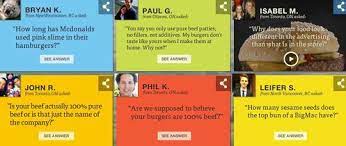
The campaign’s central premise was to invite customers to ask any questions they had about McDonald’s food, ingredients, sourcing, and preparation. McDonald’s set up a dedicated website and used various social media platforms to encourage people to submit their questions openly and transparently.
By giving customers a direct line of communication with the company, McDonald’s aimed to debunk myths and dispel misconceptions while showcasing its commitment to quality and safety standards. Questions covered a wide range of topics, including food sourcing, nutritional information, food additives, and animal welfare practices.
McDonald’s responded to the questions with straightforward and detailed answers, often including behind-the-scenes videos and images to offer a glimpse into the food preparation process. The campaign emphasized McDonald’s use of real, high-quality ingredients and its dedication to meeting or exceeding food safety regulations.
The “Our Food, Your Questions” campaign received significant attention from the media and the public, generating thousands of inquiries from curious consumers. It represented a significant step forward in McDonald’s efforts to be more transparent and open about its food practices.
The campaign not only allowed McDonald’s to address concerns and build trust with customers but also showcased the company’s willingness to listen and adapt based on customer feedback. By engaging in candid and public conversation about its food, McDonald’s demonstrated its commitment to continuous improvement and customer satisfaction.
“Our Food, Your Questions” campaign served as a turning point for McDonald’s, showcasing its dedication to transparency and responsiveness in an era where consumers increasingly demand more information about the food they consume. The campaign also set a precedent for other food companies to embrace similar transparency initiatives, emphasizing the growing importance of open communication and accountability in the food industry.
9. “Mascot Madness” (2010)
In 2010, McDonald’s launched the “Mascot Madness” campaign, a heartwarming and captivating marketing endeavor that brought back beloved mascots from the company’s early years. This nostalgic campaign celebrated the iconic characters that had charmed audiences during the 1970s and 1980s, evoking cherished memories of the past.

Through a series of television commercials, print advertisements, and digital promotions, “Mascot Madness” reunited iconic McDonald’s mascots, including the mischievous Hamburglar, the lovable Grimace, the cheerful Birdie the Early Bird, and the dignified Mayor McCheese. These beloved characters had been mostly absent from McDonald’s advertising in the preceding years, making their return a delightful surprise for fans.
“Mascot Madness” aimed to evoke a sense of joy and happiness associated with McDonald’s, successfully tapping into the nostalgia of adults who fondly remembered these mascots from their childhood. Simultaneously, the campaign sought to create new emotional connections with younger generations encountering these characters for the first time.
The commercials portrayed humorous and lighthearted interactions between the mascots, often centered around McDonald’s signature menu items, exemplifying the joy of sharing meals with friends and family. By featuring the mascots in various playful scenarios, the campaign effectively rekindled the emotional bonds customers had with these beloved characters.


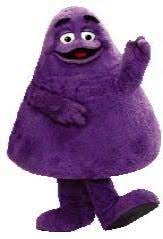


Beyond the sense of nostalgia, “Mascot Madness” generated significant buzz and excitement around the McDonald’s brand. The enduring appeal of these classic mascots reinforced McDonald’s position as a brand that celebrates happiness, friendship, and shared moments, resonating with customers of all ages.
The campaign exemplified McDonald’s ability to leverage its rich brand history and cultural heritage to connect with customers on a deep and emotional level. By breathing new life into these iconic mascots, McDonald’s reaffirmed its status as a beloved and enduring part of pop culture.
“Mascot Madness” masterfully struck a balance between honoring the past and celebrating the present, reminding customers of the joy and happiness that McDonald’s has brought to generations of families worldwide. This successful marketing strategy further solidified McDonald’s position as a cherished part of its customers’ collective memories.
10. “The FryFutbol Campaign” (2014)
The “FryFutbol Campaign,” launched in 2014, was a creative and fun marketing initiative by McDonald’s to celebrate the excitement of the FIFA World Cup. The campaign ingeniously combined the love for football (soccer) with the universal appeal of McDonald’s fries, creating a unique and engaging experience for customers.


As part of the campaign, McDonald’s introduced limited-edition packaging for its iconic French fries, transforming the fry containers into interactive mini-football fields. The packaging featured a textured surface that resembled a soccer pitch, complete with goals and lines, allowing customers to play a game of “FryFutbol” with their fries.
In addition to the special packaging, McDonald’s also launched a mobile app that complemented the “FryFutbol” experience. The app included a virtual game where customers could play a digital version of “FryFutbol” on their smartphones, adding an interactive and immersive dimension to the campaign.
The “FryFutbol Campaign” was strategically timed to coincide with the FIFA World Cup, tapping into the global excitement and enthusiasm surrounding the tournament. By aligning the campaign with the world’s most-watched sporting event, McDonald’s effectively captured the attention of football fans and enhanced the overall dining experience for customers during the tournament period.
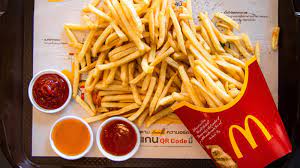
The campaign was promoted through various marketing channels, including television commercials, digital advertisements, and in-store displays. It encouraged customers to engage with the “FryFutbol” concept, transforming their ordinary mealtime into a playful and entertaining experience.
The “FryFutbol Campaign” exemplified McDonald’s ability to innovate and create unique promotional experiences that resonate with customers across different cultures and age groups. By combining the love of sports with a beloved menu item, McDonald’s successfully demonstrated its commitment to creating memorable and enjoyable moments for its customers during one of the most celebrated sporting events in the world.
The campaign not only generated excitement and buzz around McDonald’s brand during the FIFA World Cup but also showcased the company’s ability to leverage popular cultural moments to create engaging marketing campaigns. “FryFutbol” became a memorable part of McDonald’s marketing history, celebrating the spirit of football and the joy of enjoying McDonald’s fries with friends and family during a time of shared celebration.
Conclusion on McDonald’s Marketing Campaigns
McDonald’s marketing campaigns have played a pivotal role in shaping the fast-food industry and establishing McDonald’s as a global brand synonymous with joy, convenience, and delectable food. Throughout the years, McDonald’s has consistently demonstrated its ability to adapt to changing consumer preferences, harness pop culture trends, and create lasting and captivating experiences for its customers.
From the iconic “I’m Lovin’ It” jingle to beloved mascots like the Hamburglar and Grimace, McDonald’s has masterfully crafted campaigns that resonate with audiences of all ages, forging emotional connections that endure over time.
The introduction of “McCafe” exemplified McDonald’s commitment to innovation and its ability to compete in the specialty coffee market. Meanwhile, the “Our Food, Your Questions” campaign showcased the company’s dedication to transparency and responsiveness in an era where food sourcing and quality have become paramount concerns for consumers.
McDonald’s prowess extends to creating limited-time promotions like “McDonald’s Monopoly” and “The McRib Is Back” campaigns, which have become highly anticipated events, generating excitement and foot traffic to McDonald’s restaurants.
Moreover, McDonald’s proficiency in tapping into nostalgia, evident in the “Mascot Madness” and “FryFutbol Campaigns,” underscores the brand’s profound cultural impact and its capacity to connect with customers on an emotional level.
Throughout its marketing history, McDonald’s has demonstrated an astute understanding of its audience, continuously evolving to meet consumer demands while staying true to its core values and brand identity.
By embracing creativity, innovation, and inclusivity, McDonald’s marketing campaigns have successfully captured the hearts and minds of customers worldwide, cementing its status as a cherished fast-food icon and a symbol of shared moments of joy and happiness. As McDonald’s continues to evolve and adapt to the ever-changing landscape of the food industry, its marketing campaigns will undoubtedly remain a source of excitement and inspiration for generations to come.
Note –
In today’s global marketplace, every purchasing decision carries weight. As conscious consumers, we have the power to support businesses that align with our values. We encourage you to consider exploring and promoting products that reflect ethical practices and contribute positively to local communities.
In light of the Israel-Palestine conflict, we do not support promoting Israeli products that generate profits used to harm innocent people. Instead, we focus on their product innovation ideas and promotional techniques. How have they captured the global market? How have they influenced consumers to purchase their products over the decades? What marketing strategies have they employed? We encourage new entrepreneurs to study their business and marketing strategies to develop alternative products.
By choosing not to promote Israeli products, you can take a stand for justice and equity, supporting brands and entrepreneurs who prioritize these values. At the same time, this is a call to new entrepreneurs: now is the time to bring your innovative ideas to life! The world needs fresh, ethical alternatives that can compete on the global stage.
If you’re an entrepreneur with a passion for creating products that make a difference, seize this opportunity to fill the gap with your unique offerings. Let’s build a marketplace that celebrates diversity, fairness, and innovation. Together, we can shape a future where our choices reflect our principles and foster a more just and inclusive economy.



